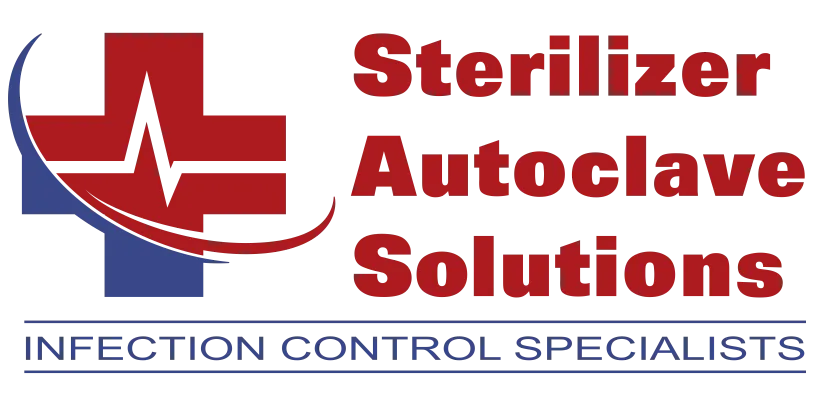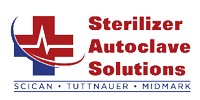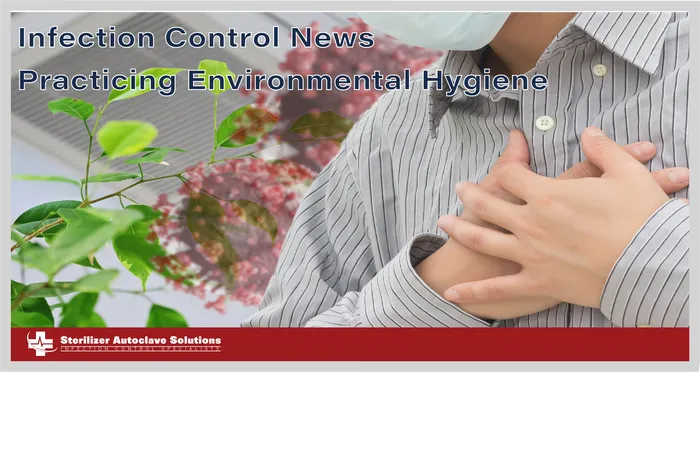Infection Control News: Practicing Environmental Hygiene
In the world of infection control, there are various bases to cover when it comes to proper prevention. There’s one area however that isn’t talked about quite as much. You hear a lot about wiping down surfaces, and keeping your instruments clean, but you don’t hear much about the actual air in the room. Truth be told, environmental hygiene is vitally important, especially when in the presence of airborne diseases.
In an article written by Infection Control Today, they go over the importance of environmental hygiene, the risk of airborne diseases, and some ways to better control your practices airspace. So in this article, we’d like to go over what they talked about when it comes to proper protection, and we’ll also discuss a solution we offer.
The News
In the ongoing battle against infectious diseases, the importance of environmental hygiene, specifically air pressure regulation and ventilation systems, cannot be overstated. Health care facilities must prioritize the control of air flow to prevent the spread of airborne pathogens that pose a significant risk to vulnerable patients.
Airborne Diseases and the Need for Regulation
Pathogenic microorganisms such as Mycobacterium tuberculosis (Mtb) and COVID-19 present unique challenges due to their ability to linger in the air for extended periods. In the case of Mtb, which remains a leading cause of death for individuals with HIV, it is crucial to implement air pressure regulations to contain and prevent the transmission of these diseases within healthcare settings.
Positive vs. Negative Pressure: Controlling Airflow
The concept of using positive and negative pressure differentials between rooms to direct airflow from clean to less clean areas is essential in maintaining a safe patient environment. Whether it is to protect patients, medical supplies, or equipment, understanding the distinction between positive and negative pressure areas is paramount in mitigating the risk of disease transmission.
Design Considerations for Sterile Processing and Operating Rooms
Sterile processing departments and operating rooms play a critical role in ensuring patient safety. Proper air pressure regulation within these areas is necessary to prevent contamination of surgical instruments and protect immunocompromised patients during procedures. Guidelines recommend maintaining positive pressure in operating rooms to prevent potentially infectious air from infiltrating the sterile environment.
Environmental Hygiene as a Priority
Regulating air pressure within healthcare facilities is not just a matter of compliance but a crucial step in reducing the airborne transmission of diseases. Prioritizing environmental hygiene measures, such as maintaining positive and negative pressure zones, contributes to creating a safe environment for all patients, staff, and visitors.
As the healthcare sector continues to address the challenges posed by infectious diseases, the focus on environmental hygiene, air pressure regulation, and ventilation systems remains a cornerstone in the fight against airborne pathogens.
And when it comes to the fight against airborne pathogens, Sterilizer Autoclave Solutions has just what you need.
The SAS Solution: OSO Pure
Here at SAS, we have a collection of products that can give you the upper hand in the fight against an unhealthy airspace; OSO Pure Air Purifiers. OSO Pure has curated a variable selection of their air disinfecting purifiers that provide only the best air quality for your practice. Not only that, but they also offer different variations that allow for a diverse use-case.
But before we discuss the air purifiers, let’s briefly touch on the importance of recognizing airborne pathogens.
What’s the Problem?
It’s been stated by various health organizations that some viruses can not only linger in the air sometimes for hours, but also can be transmitted by people no matter the distance. While it’s said that close-contact transmission is more common, it can happen anywhere through the air. Whether you’re gathered in enclosed spaces (like offices, waiting rooms, treatment rooms, and break rooms, etc.) the ventilation and air quality definitely come into play and can intensify the chance for transmission. So what can we do?
First off we really need to ensure we are paying attention to all the possibilities and types of transmission. We need to recognize the difference between droplets (spread by coughing and sneezing), and aerosols that can carry the virus much further.
In the past, droplets larger than 100 μm were typically used as the threshold size for measurement. However, it has been discovered that aerosols can contain droplets smaller than 100 μm. Viral droplets larger than 100 μm generally travel only about 6 feet (2 meters) before falling to the ground, influencing the implementation of the six-feet social distancing guideline.
On the other hand, aerosols with infectious viruses smaller than 100 μm have the potential to travel beyond 6 feet (2 meters) and can congregate in poorly ventilated spaces, forming a lingering cloud. In such conditions, they can stay suspended for varying lengths of time, from seconds to hours, contributing to instances of super-spreading.
And with that, we should really shift focus to include protecting the air we are breathing. Improvements in indoor air quality by ventilation and filtration will not only help reduce the transmission of deadly viruses but also improve the overall health of our people and buildings.
For Rooms
For room service, we have the ADP-70 model from OSO Pure. That stands for Air Disinfecting Purifier-70.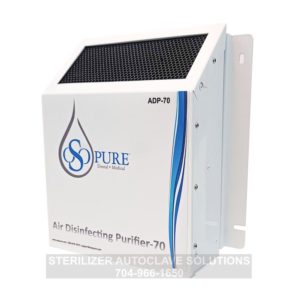
The ADP 70 air disinfection utilizes a proven technology commonly used in hospital HVAC systems called Photocatalytic Oxidation ( PCO). These charged ions, referred to as Hydroxyl Radicals (HO), are powerful oxidizers that destroys particles as small as .001 microns. HEPA systems only filter particles down to .300 microns. The ADP 70 continuously emits HO for on contact removal of contaminants.
The ADP-70 is perfect for:
- Operatory areas
- Patient waiting or common areas
- Employee Break rooms
- Implant Processing
- Sterilization center
- Lab Processing
- Denture
- Waiting Rooms
Any unconfined area where you want to control pathogens and odors.
For Buildings
For your buildings, whether it be offices, medical practices, etc, we have the ADP-V line from OSO Pure. That stands for Air Disinfecting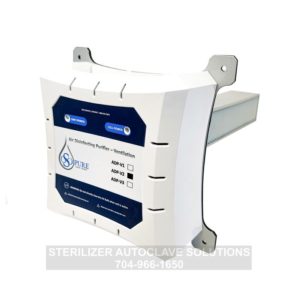 Purifier Ventilation.
Purifier Ventilation.
The ADP-V Series air purifier installs in the practice’s HVAC system effectively oxidizing viruses, bacteria, mold, odors and VOC’s in the air and on surfaces. Unlike air filtration devices, the ADP emits powerful oxidizers that attack pathogens at the point of origin as opposed to waiting for them to be removed via filtration. Our process provides an extra layer of protection 24/7 to you, your staff and your patients.
Some of the ADP-V Series features are:
- Utilizes your existing system, purification is distributed evenly throughout the practice
- Reduces airborne and surface contaminants such as bacteria, viruses, VOCs, mold, and mildew
- Purifies the HVAC ducts and kills mold on the A-Coil and drip pan
- Eliminates odors at the source
- Ideal for most indoor spaces
- Safe for humans and pets
- LED function lights confirm continuous operation
- Low to no maintenance – replace cell every 2 years.
We also have the ADP-V2 and ADP-V3 available.
For Vehicles
When it comes to your vehicle’s air quality, OSO Pure even has you covered there. With their EVPP Mobile Disinfecting Purifier. That stands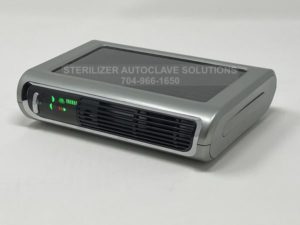 for Emergency Vehicle Personal Purifier
for Emergency Vehicle Personal Purifier
The EVPP is the perfect Air Purifier for emergency vehicles, your work vehicle, or desktop workspace. Utilizing PCO Technology along with Negative Ionization to purify air and surfaces, up to 99% of Bacteria, Viruses, Mold, Mildew, and other contaminants are rendered harmless. Odors like smoke are also eliminated, creating a cleaner safer work environment.
Final Thoughts
The significance of air pressure and ventilation systems in maintaining infection control within healthcare facilities cannot be understated. By regulating air flow through positive and negative pressure differentials, facilities can effectively contain airborne pathogens and improve patient safety. Sterile processing departments and operating rooms require meticulous attention to air pressure management to prevent contamination and safeguard patients during procedures. But it’s not just medical practices, regular office buildings, workplaces and even your car. Air quality is an important factor no matter where you go.
Here at Sterilizer Autoclave Solutions, we understand that, and offer you a solution of our own. OSO Pure’s line of air purifiers offers a proactive approach to enhancing environmental hygiene. These air purifiers provide an additional layer of protection by effectively removing airborne contaminants and maintaining clean air quality in healthcare settings, contributing to a safer and healthier environment for all.
If you have any questions about the OSO Pure air purifiers or anything else, please give us a call at 704-966-1650 Option 3 for our Free Tech Support line. You can also find our various programs available using the links below.
As always if you have any questions about this process or anything else please feel free to contact us and take advantage of our “FREE TECH SUPPORT.”
We also offer FREE VIRTUAL TECH SUPPORT to “See and Talk” with a “Real Time Live Technician” for any problems you may be in need of help with.
You can also use our “FREE MAINTENANCE PROGRAM”. Take the guesswork and worrying about what unit is due for maintenance and which maintenance cycle it is time for. We will keep track of all your autoclaves and let you know when it’s time for anything.
The OSO Pure ADP-70 is available on our site for purchase here.
The OSO Pure ADP-V is available on our site for purchase here.
The OSO Pure EVPP is available on our site for purchase here.
